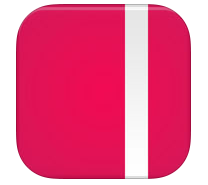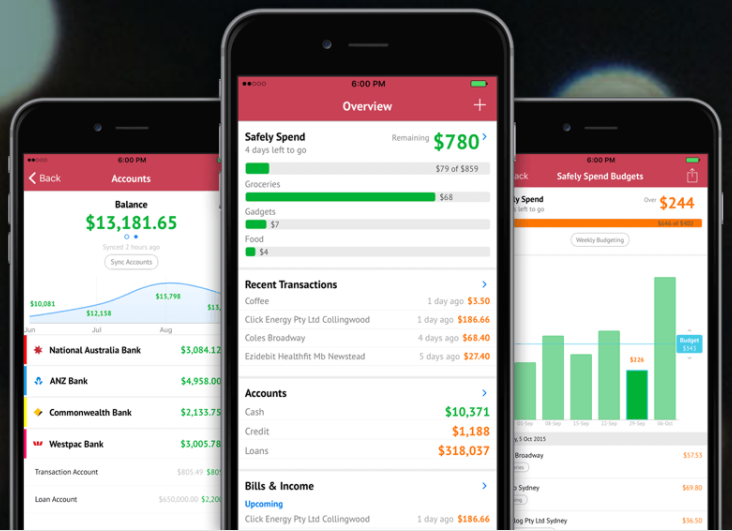Build Your Emergency Savings this Year
The start of a new year is the perfect chance to reflect and set clear goals for the year ahead.
What would you change to make this year your best yet?
Our financial planners noticed last year that many clients, even those with a mortgage or investments, don't have an emergency cash fund to meet unexpected expenses.
This means when an emergency expense occurs, they resort to relying on credit cards or short term loans.
This can adversely affect your credit file.
If you’re living paycheck to paycheck, having an emergency fund in place is essential.
If you don't have a system in place to protect yourself against the unexpected, read on to find the tools and tech that can help you know where your money goes and get a financial buffer in place.
So you're prepared for the unexpected in the future, here’s how to build an emergency savings fund:
How to start your emergency fund:
-
Start small.
Even if you don’t have much to save, it will slowly add up to give you that little bit extra security. -
Automate Saving
Setting up a small automatic deduction can help you to save without even realising that you’re doing it. -
It's another bill
Treat saving like a bill and just pay it when you pay your other bills. -
Plug your money leaks!
Are you paying for things that you don't really use? Reduce some of your outgoing expenses that you’re not really benefiting from.
These might include a paid TV service, newspaper or magazine subscription you don’t get around to reading, even a gym membership.
Cut out anything you spend money on that isn’t really adding much value to your life. Then save this amount. -
Round-up
Round-up purchases to the nearest dollar and save the difference.
This is just like saving spare change, but who carries cash any more?
There are budgeting apps you can use to help with this. -
Knock off Debt
Get the satisfaction of using your new savings habit to knock off your debts.
Set a minimum for your emergency fund, say $500.
Each time it grows $100 above this, use the extra to pay off a debt. A double purpose account until your debts is gone. -
Keep the momentum rolling
Once your debts are gone, keep putting the amount you were paying away.
This time into your savings instead of towards a lender.
You’ll be earning interest instead of paying it! -
Stash lump sums
Stash a bonus or tax refund. -
Refinance & Save
You might consider refinancing your mortgage or car loan to reduce the amount of interest you pay.
This will free up some money that was previously going to loan payments to go toward your savings fund. -
Sell things you don't need
If you've got stuff that you don't need, it might be a good time to clean out! Things you're not using any more could be useful to someone else.
Holding a garage sale could be a great way to make some money you can put right towards starting your emergency fund.
Plus you'll have less clutter about, which is always a good thing.
Bonus Tip #11
Start a splurge fund too
If you allow yourself part of your income for the things you really want to do, then saving won’t feel so hard.
For every $3 you save towards your emergency fund, try putting $1 into a splurge fund that you can use for things like a holiday, or a purchase you really want to make.
You'll be less tempted to spend the money you see accumulating in your emergency fund because you know you have a stash you can dip into to treat yourself.
Why build an emergency fund?
Having an emergency fund means that if an unexpected bill comes up, you’re not reaching for the credit card or applying for a short term loan to get you through.
By topping up your emergency fund regularly, you'll take the stress off yourself when expenses occur because you’re already factoring them in.
It’ll also mean you won't have to miss important payment dates on your financial commitments, saving you money in late fees.
Don’t use credit cards for emergencies
A credit card can get you out of a tight spot in the short term, but it may create bigger problems for you in the longer term.
An average credit card is costing you 15-25% p.a., which can really add up in fees if you carry a balance from month to month.
Should I pay out debt before starting my emergency fund?
There’s a strong argument for paying down your credit card debt before building a substantial emergency fund to avoid paying interest on what you owe.
Earn interest rather than paying it!
If you have an outstanding balance on your credit card, focus reducing this to an amount you know you can pay at the end of each month.
Once you've reduced this debt, concentrate on putting some cash into your emergency fund to give yourself a buffer against unanticipated expenses.
Most importantly, once you’ve got that financial buffer in place, make sure to replace it when you dip into it.
As soon as you're earning interest rather than paying it, you'll be in a better position financially.
Starting your Emergency Fund
Once your debts are manageable, it makes sense to save some accessible cash into a savings account that pays interest.
Ideally, this account will be linked to your everyday spending account so you can quickly access the funds if you need to.
To get your emergency savings started before your debts are paid down, a good rule of thumb is to put $1 into savings for every $2 you put towards your debt.
How big does an emergency fund need to be?
It's generally agreed amongst finance experts that you should have about 3 months living expenses on hand in case of an emergency.
Our financial planners recommend that you have $1000 available, and you can build this as you become more efficient with saving over time.
Start Small
When you're just starting to build your emergency fund, you shouldn't worry about the size of your savings.
Anything you can squirrel away now means having to borrow less if an expense comes up.
Start by saving a small amount each week, let's say $10 per week, to get you into the habit.
If you save just $10 per week for a whole year, you’ll have $520 by the end of the year. DOuble it and you’ll have $1040.
You can see that once you have a savings habit in place, it adds up quickly.
Putting a budget in place
Once you're comfortable with saving $10 per week, you can increase the amount you save to stay in line with your regular expenses.
When you're confident about the amount you can save and what you're spending, lock in a budget and automate your savings.
By building your savings amount gradually, you'll become aware of all of your expenses. By the time you lock in your budget, you can be confident that you won't need to dip into your savings to pay regular bills.
Tech to track your spending
Try using an app like Pocketbook to track where you’re spending your money.

Once you know what you are spending on it’s easier to work out what things you don’t really enjoy or get much out of, and you can eliminate these negative costs.

ASIC also has a really handy Savings goal calculator that can help you to get on track.
The best place to keep your emergency cash:
Once your emergency fund starts to grow, it's ideal to keep it across several accessible places rather than all in one location.
Two great options for your emergency savings are:
- Online savings account with a low-interest rate
- Short term high-interest account.
Both of these options allow you to earn interest which will help your savings to grow.
Some banks let you start a term deposit account with as little as $1000, with terms from 1 month to 5 years.
Be sure to do your research! There are online banks in Australia now that offer accounts with no account keeping fees. By choosing an account that pays interest frequently, you can capitalise on your compounding interest.
If you'd rather stick with your current bank, take the competitors to offer to them and see if they will match it.
Other financial safeguards
If you have health insurance and/or income protection, your emergency savings can be a little smaller than if you didn't have this insurance in place.
Apart from paying your annual premium, you'll usually need to pay an excess fee if you need to access the insurance, depending on your exact policy. After this, the insurance company covers your costs.
Having insurance in place can give you the confidence that you can still meet your mortgage payments and other loan payments in a crisis.
Own your savings goal
When you've committed to a savings plan to build your emergency fund, it's easy to get sidetracked by everyone around you and spend more than you intend. Use this savings goal calculator to help you to get on track.
The trick is to be confident in your decision to create security for yourself with a financial buffer.
Keep the end goal in mind, and a bit of pain in the short term will pay off in the future when you're confident you can handle the financial challenges life throws at you.
